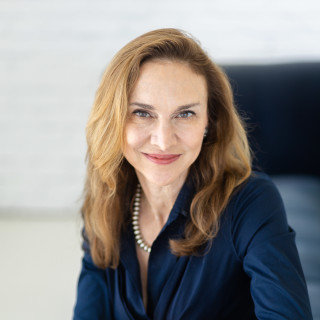“Doctor, I feel like you just don’t have time for me anymore.” My 92-year-old patient Mr. Gray peered at me through his thick glasses, his bushy eyebrows knitted together. I felt my breath catch in my chest. Mr. Gray was right. As the constraints of medical practice had tightened over recent years, time had become a limited commodity — and something I had lost control over. I did my best to make the brief encounters that now passed for office visits feel like something more, but a threshold had clearly been crossed.
It had not always been this way. Over the 20 years that I had cared for Mr. Gray, my medical practice had changed almost unimaginably. We had gone through three iterations of the EHR, each more onerous than the last. Like many other groups faced with the economics of 21st century health care, my large cardiology practice had been acquired by a health care system several years prior. Over that time, we had gradually ceded control. Several more patient slots had been added to the morning and afternoon schedules, meaning less flexibility for those who needed a little more time. And our scheduling department was in the process of being moved out of our office and into the larger system for the sake of efficiency.
Following our very first encounter when he was hospitalized with a cardiac illness, Mr. Gray had become a regular in my clinic. I was always happy to see him on my schedule. He might have been a little cantankerous, but he was never afraid to speak his mind. And I felt that we had achieved a great partnership. Despite his age and long list of health issues, his mind was bright. He always asked great questions, and he loved to challenge me, but he was usually willing to accept my recommendations after we had talked things through.
Reeling from the sting of his accusation, I promised Mr. Gray that I would make the time for him. I assured him that he was important to me, and I apologized deeply. Although I had not created this situation, I was determined to make sure that I repaired it to the best of my ability.
Mr. Gray was not the only one who had noticed this constriction of time, and ultimately he wasn’t the only patient for whom I surreptitiously bent the rules. But his age and his medical complexity made the idea of what essentially boiled down to far less than 10 minutes face-time patently absurd. Mr. Gray had the audacity to remind me of my Hippocratic oath. Faced with his rebuke, I felt compelled to go beyond helpless banalities about “the system” and “the computer.”
The current health care system often rewards those who see more patients, spend less time, and generate higher RVUs. A 92-year-old man’s request for physician time might seem inefficient and irrelevant by those standards. Yet Mr. Gray reminded me of the importance of living up to the principles that had inspired me as a younger and more idealistic physician.
I contacted our scheduling department and cajoled them into placing an alert on Mr. Gray’s chart, noting that two patient slots would be required for his visits. This was not standard procedure, and I knew that it might be considered an inappropriate use of limited office time by the number crunchers in management. On the other hand, as a senior cardiologist, I had worked with the in-house office staff for many years, and my unusual request was granted without question. Mr. Gray understood that I was going to bat for him, and he appreciated the effort.
From that point on, every visit with him was a reminder of why I became a physician in the first place. Mr. Gray and I were able to discuss his complex health concerns in detail, review the options, and ensure his understanding.
Over this time, I got to know Mr. Gray on a more personal level. An artist since his late 70s, he often brought in paintings that he had made, setting up the examining room as a small gallery. His art would be propped up on the examining table and the desk would be carefully arranged when I walked in. Birds, animals, buildings, historical events — all were subjects that caught his fancy. But he wasn’t only a painter. Mr. Gray delighted in showing me photos of his raised-bed garden on his smartphone. And over time I learned more about his years in the military and later life as a farmer on the Great Plains. I believe that the trust this relationship created contributed to his longevity.
When Mr. Gray was 95, I decided to retire from my cardiology practice and return to school to study for a fine arts degree in hopes of eventually teaching in the medical humanities. I dreaded having to tell him goodbye. I checked and rechecked his upcoming appointment, booked for my last month of practice. A few weeks ahead, I saw that a scheduler had moved the appointment to the schedule of one of our practice’s PAs. Although technically this was in line with the practice’s standards, and the PA was very kind and competent, it was not what I had promised Mr. Gray. By that time, the scheduling department had been centralized and merged with a larger call center serving many different practices. Despite my calls and messages to the scheduling center, the appointment was never moved back to my schedule. Apparently the 30 minutes Mr. Gray required was no longer recognized as a physician appointment by the system.
Nevertheless, I managed to get hold of Mr. Gray that evening by phone. I will always be grateful for that. During our call, I let him know that I would leave him in good hands, and I thanked him for inspiring me. About six months later, I learned that Mr. Gray had passed away. I was notified when his daughter, whom I had never met, brought one of his paintings to the office as a gift for me.
There may be those who believe this type of care is anachronistic or idealistic. It certainly didn’t optimize revenue, if we look at these longer visits purely from the standpoint of office throughput and RVUs. But I believe that Mr. Gray’s story is a cautionary tale for these times of metrics and corporate management. When efficiency and productivity take precedence over years of connection and trust-building, we may lose something beautiful and ineffably human. And in the end, the care we provide may itself suffer.
Offering two blocks of time for complex patients is not always feasible, depending on the constraints of the system. Most doctors no longer own their practices, and they may have little say in the way their schedules are configured. Fueled by lower reimbursements and a drive for greater profitability, many health care systems demand greater productivity with fewer resources. Meanwhile, the EHR requirements become ever more onerous.
It’s up to physicians to lead the way toward making the patient the priority again. No one else shares our unique vantage point, nor our personal investment in the care of our patients. The time we spend with our patients is more than simply interaction and social connection, valuable as that may be. The doctor-patient relationship is by its nature collaborative. There are tangible benefits to establishing trust. We may unwittingly break those bonds when we are perceived as rushed or pressured.
Patients may not understand the forces that have created these conditions. Instead, they may understandably interpret these experiences as impersonal and incomplete, a failure of the physician to care. Especially when dealing with patients with complex and overlapping medical conditions, those who may be reticent to complain, or those who may be wary or uncomfortable asking questions, this trusting connection can be a lifeline.
How do you cope with the limitations on time with patients? Share your strategies in the comments.
Dr. Sarah Samaan is a cardiologist who retired in 2022 after nearly 30 years of practice. She is a physician coach, a medical writer, a registered yoga teacher, and is currently enrolled in a university BFA program in photographic arts. She competes in the equestrian sport of dressage. Dr. Samaan blogs at MindfulPhysicianCoaching.com and tweets @heartsmarter. She was a 2022–2023 Doximity Op-Med Fellow.
Name changed and details removed to protect the patient’s confidentiality.
Image by Julia Tim / Shutterstock







